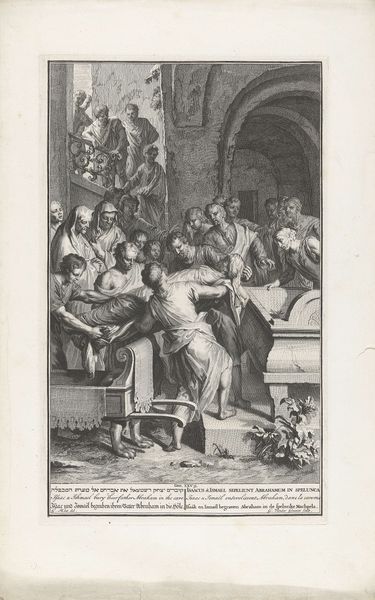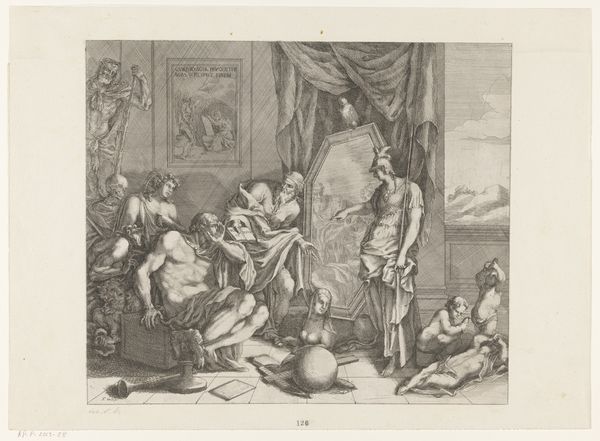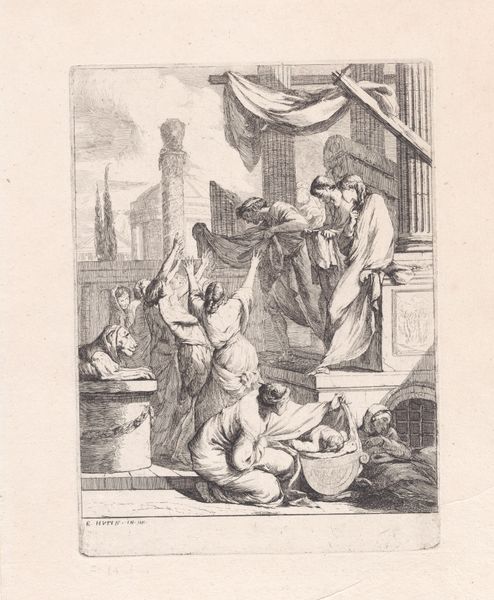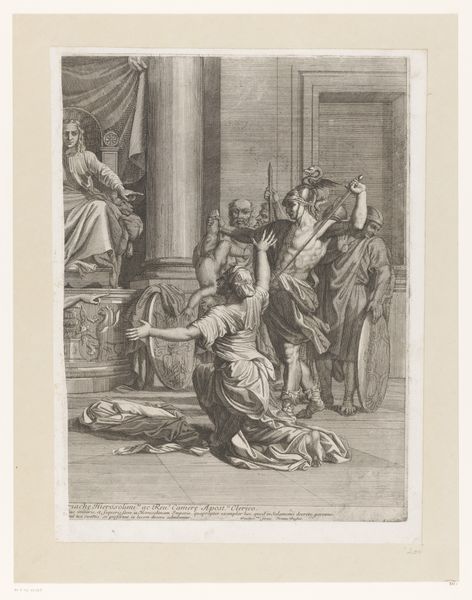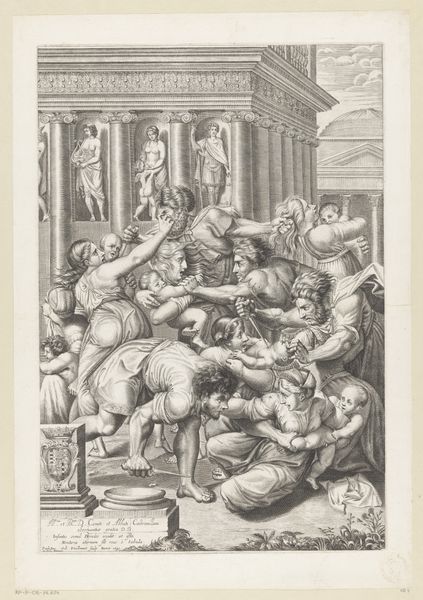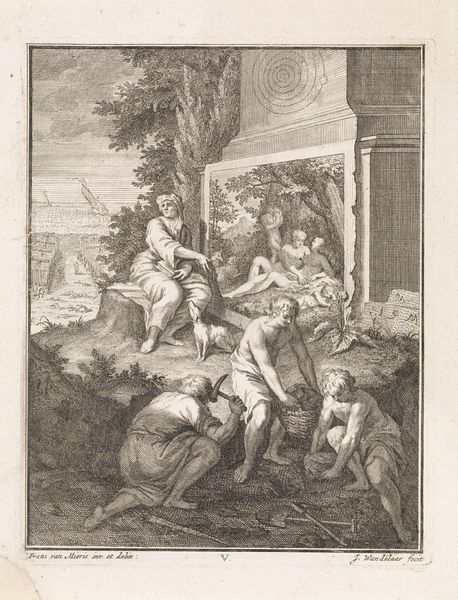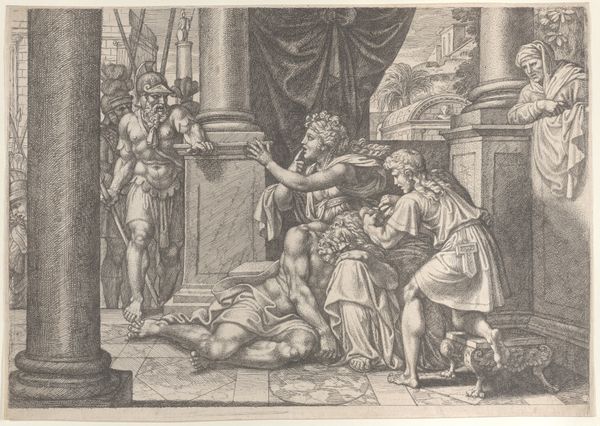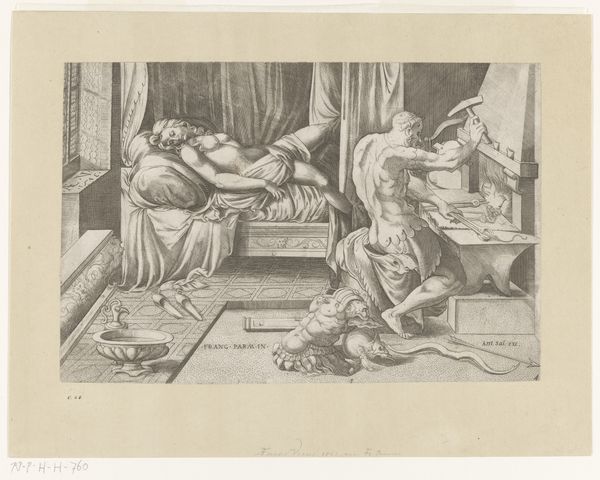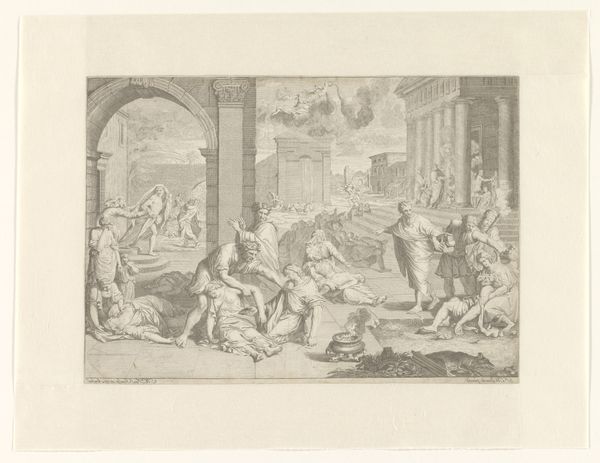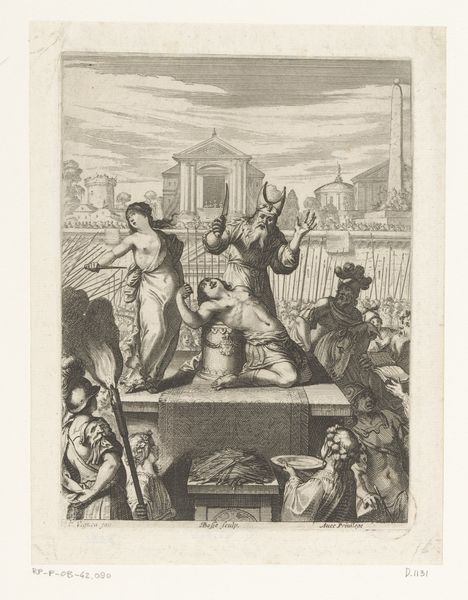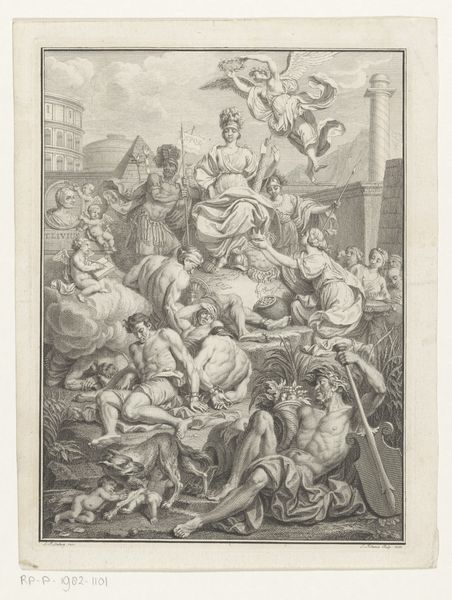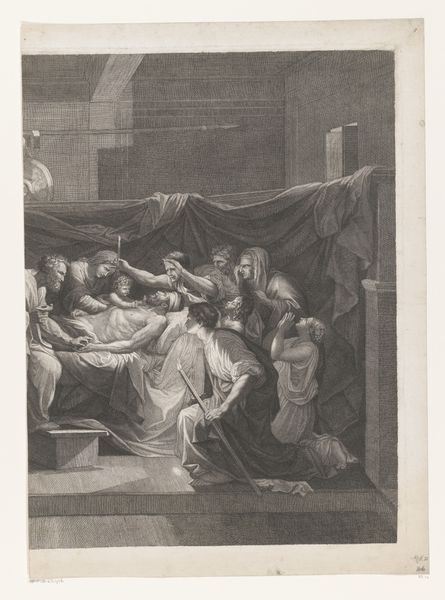
print, etching
#
allegory
#
narrative-art
#
baroque
# print
#
etching
#
old engraving style
#
figuration
#
history-painting
Dimensions: height 602 mm, width 495 mm
Copyright: Rijks Museum: Open Domain
Jean Pesne created this section of “Christus in het huis van Simon in Bethanië” using etching, a printmaking technique, sometime before 1700. The image is made of thousands of tiny etched lines, all of which had to be carefully incised into a metal plate before printing. When we look closely, we can see how this painstaking process has imbued the artwork with social and cultural significance. Etching allowed for the wide distribution of images, making art accessible to a broader audience beyond the wealthy elite who could afford original paintings. It required skill, patience, and a deep understanding of materials. The linear quality and attention to detail in Pesne's etching is also visible in other luxury goods made at the time. The rise of printmaking is very much associated with the rise of mercantile capitalism. So, when you look at this print, consider it as more than just a religious scene. Think about the labor, the process, and the social context that shaped its creation, and you can start to challenge traditional distinctions between fine art and craft.
Comments
No comments
Be the first to comment and join the conversation on the ultimate creative platform.

